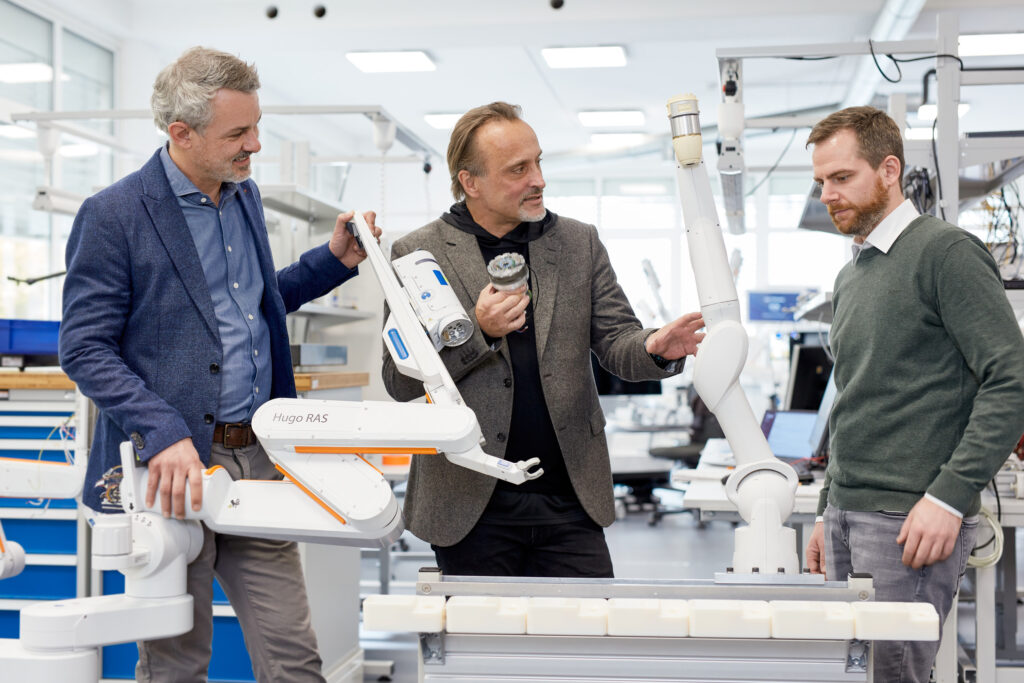Surgical robots from space – Successful together

MIRO robotic arm prototype (right) and the HUGO robotic arm (left).
Source: Medtronic
09.02.2022 – The story of Medtronic’s Hugo™ RAS system (robotic-assisted surgery) begins in space: scientists at the Institute for Robotics and Mechatronics at the German Aerospace Center (DLR) have been researching lightweight robotics technology since the 1990s. It was originally developed for use by astronauts in space, for example to carry out repairs on the outside of the space station. The robotic arms can be operated remotely from Earth or from the International Space Station ISS. The engineers pursued the idea of using the sensitive robotic arms on Earth from the start. This is how MIRO, a lightweight robotic arm optimized for medical applications, came about in the mid-2000s. It is based on the human arm in terms of structure, size and mobility, so that it can be operated intuitively, sensitively and safely. The Hugo™ RAS system is the result of many years of development work at DLR and Medtronic and is based on the original technology from space: the surgeon controls the sensitive robotic arms remotely, from a console, more precisely and with more stamina than a human hand could.
You can read the entire development history of DLR and Medtronic here From space to the operating room: the development journey of a surgical robot | Medtronic